
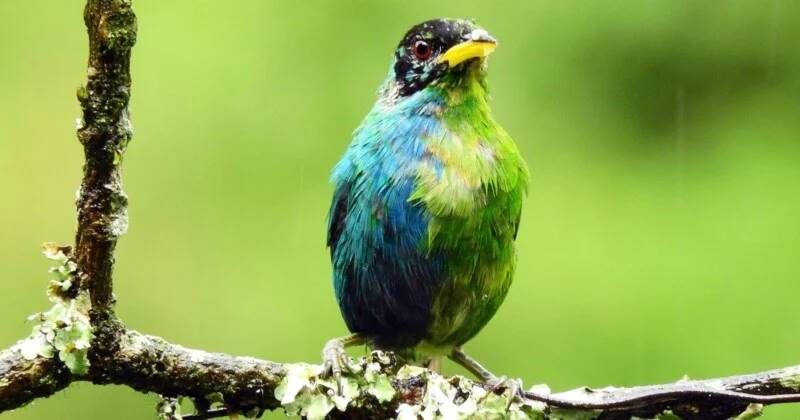
Rare Half-Male, Half-Female Bird is Photographed in Once-in-Century Event
![]()
An “extremely rare” half-female, half-male bird was photographed — in a sighting that has only been made once over 100 years ago.
Zoologist and professor at the University of Otago in New Zealand Hamish Spencer had been on vacation in Colombia when amateur ornithologist John Murillo saw a hardly-seen bird known as a green honeycreeper.
However, there was something highly unusual about this particular green honeycreeper bird.
Typically, male green honeycreepers are predominantly blue in color. Meanwhile, female green honeycreepers have vibrantly green coloring. But this observed bird had both colors.
![]()
The striking footage and photos of the green honeycreeper show a bird with typical male, blue plumage on the right side of its body and standard female, green plumage on its left.
Biologist Spencer determined that this highly unique bird is actually a bilateral gynandromorph which has two sexes split down the midline. The green honeycreeper has one side of the body male, and another side female.
The incredible images of the rare honeycreeper were taken by Murillo last year. However, the photographs were only recently released in a report by scientists published in the Journal of Field Ornithology.
A Sighting Many Birdwatchers Will Never Witness
In a press release, Spencer said that most birdwatchers go their whole lives without seeing a bilateral gynandromorph in any species of bird.
And this is only the second known observation of a bilateral gynandromorph in the green honeycreeper species in more than 100 years.
The biologist said that Murillo’s photos are “arguably the best of a wild bilateral gynandromorphic bird of any species ever.”
“Many birdwatchers could go their whole lives and not see a bilateral gynandromorph in any species of bird. The phenomenon is extremely rare in birds, I know of no examples from New Zealand ever,” Spencer says in a press release.
“It is very striking, I was very privileged to see it.”
A bilateral gynandromorph is an animal that is born with one male half and one female half. The animal is usually divided down the middle with characteristics of two sexes in one body.
Bilateral gynandromorphism has been documented in other animals including bees, butterflies, spiders, and stick insects. Cardinals and the rose-breasted grosbeak have also been documented with this division, but bilateral gynandromorphs are believed to be rare.
Image credits: All photos by John Murillo.
Recommended Videos
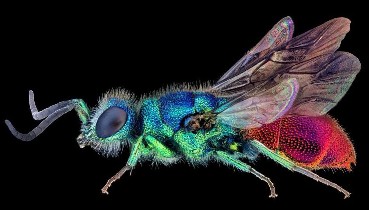 Close-Up Photographer Of The Year: 20 Stunning Winning Images12700 views
Close-Up Photographer Of The Year: 20 Stunning Winning Images12700 views 68 Stunning Places Across The United States That Show Just How Unique This Country Really Is97 views
68 Stunning Places Across The United States That Show Just How Unique This Country Really Is97 views-
Advertisements
 At 39 kg, The World’s Heaviest Radish Is A Record-Bгeаkіпɡ Achievement197 views
At 39 kg, The World’s Heaviest Radish Is A Record-Bгeаkіпɡ Achievement197 views 23,000-Year-Old Human Footprints Found in New Mexico64 views
23,000-Year-Old Human Footprints Found in New Mexico64 views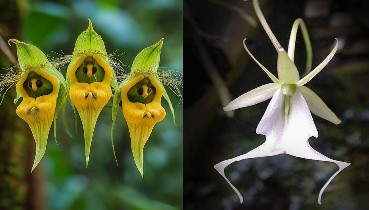 Orchid (Ghost Orchid)88 views
Orchid (Ghost Orchid)88 views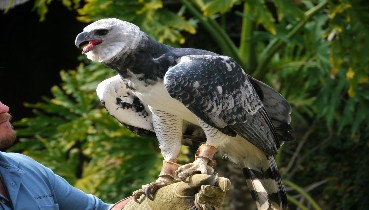 25 Largest Birds Of Prey That Are Pretty Awesome (While Kind Of Scary)15409 views
25 Largest Birds Of Prey That Are Pretty Awesome (While Kind Of Scary)15409 views Dolmen de Soto: A Megalithic Monument Dating Back To 3000 B.C851 views
Dolmen de Soto: A Megalithic Monument Dating Back To 3000 B.C851 views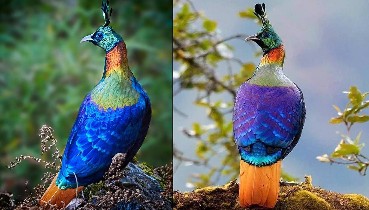 This beautifully colourful pheasant is the national bird of Nepal.13676 views
This beautifully colourful pheasant is the national bird of Nepal.13676 views
You may also like
 Unveiling Vietnam’s Astonishing Rare Red-Shell, Orange-Pulp Jackfruit That Amazes the Community
Unveiling Vietnam’s Astonishing Rare Red-Shell, Orange-Pulp Jackfruit That Amazes the Community 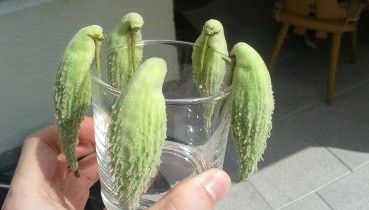 10 Adorable Photos Of Fruits And Vegetables That Seem To Have Come Alive
10 Adorable Photos Of Fruits And Vegetables That Seem To Have Come Alive  19 Times Mother Nature Gave Us Goosebumps With Her Works of Art
19 Times Mother Nature Gave Us Goosebumps With Her Works of Art  Wildlife Photographer Shares Mesmerizing Footage Of A Giant Brahmin Moth With Tiger Eye Wing Pattern
Wildlife Photographer Shares Mesmerizing Footage Of A Giant Brahmin Moth With Tiger Eye Wing Pattern